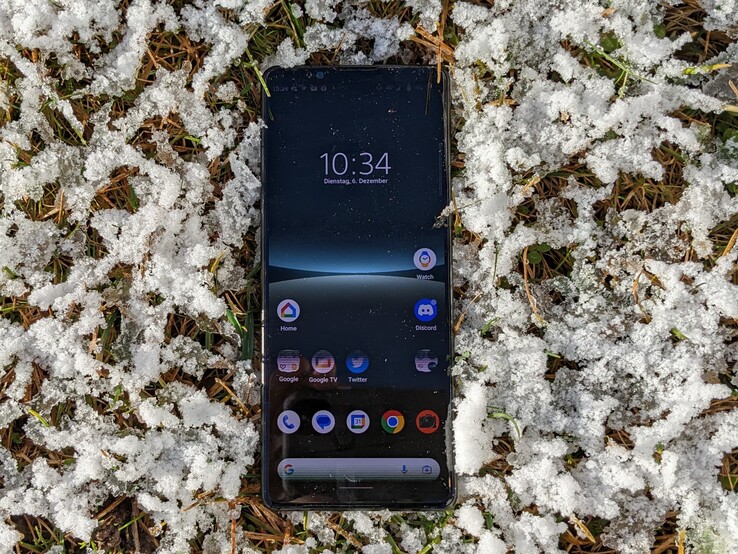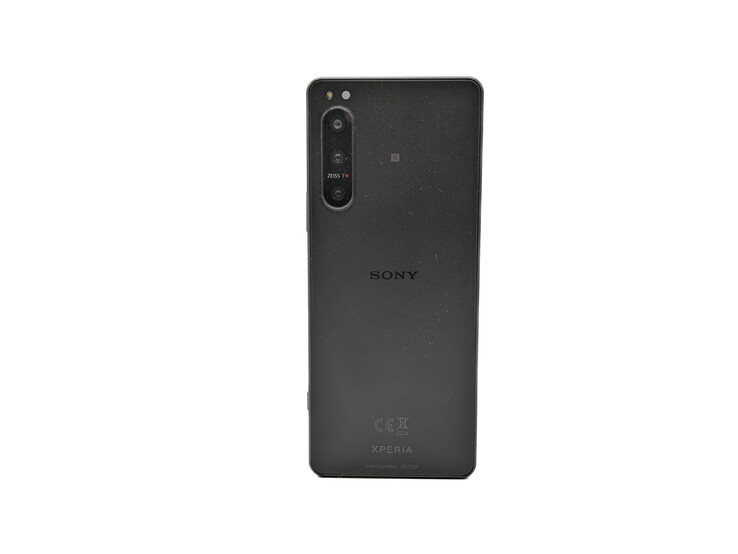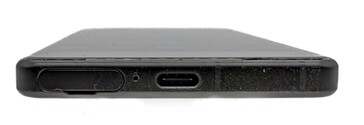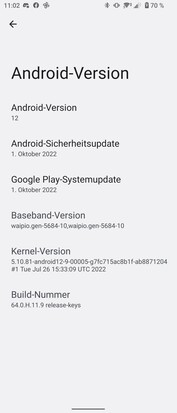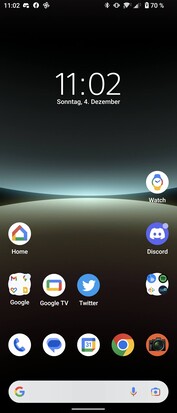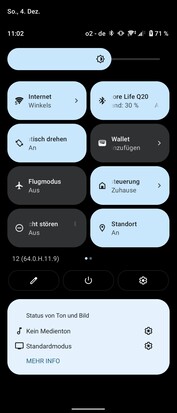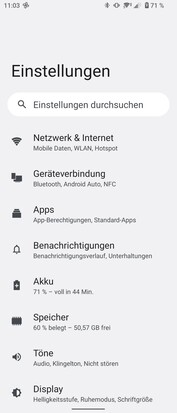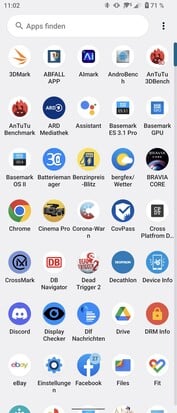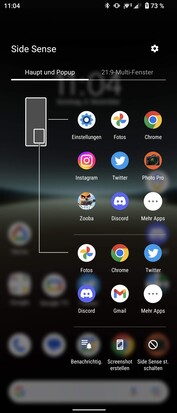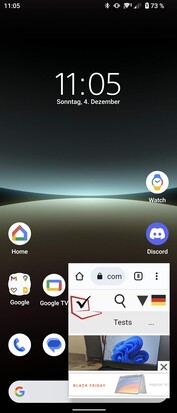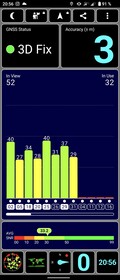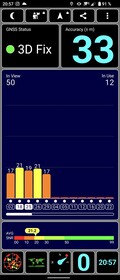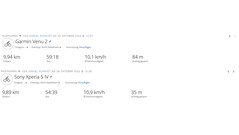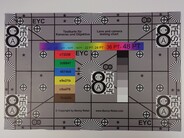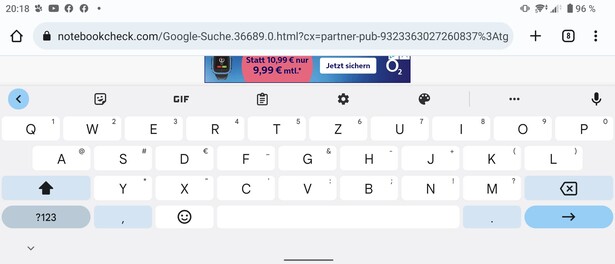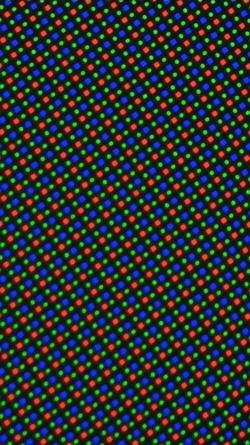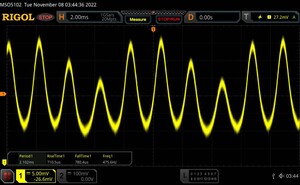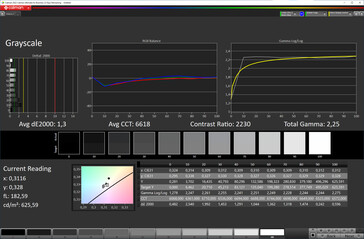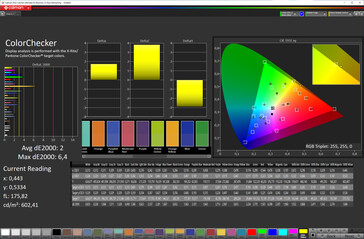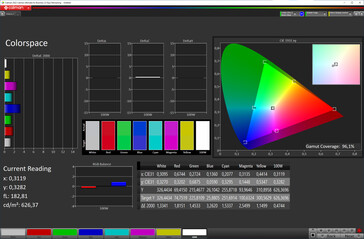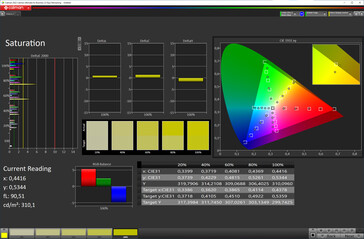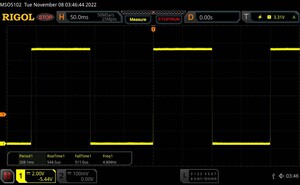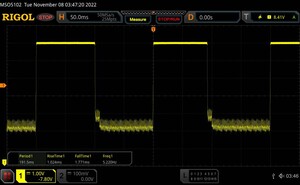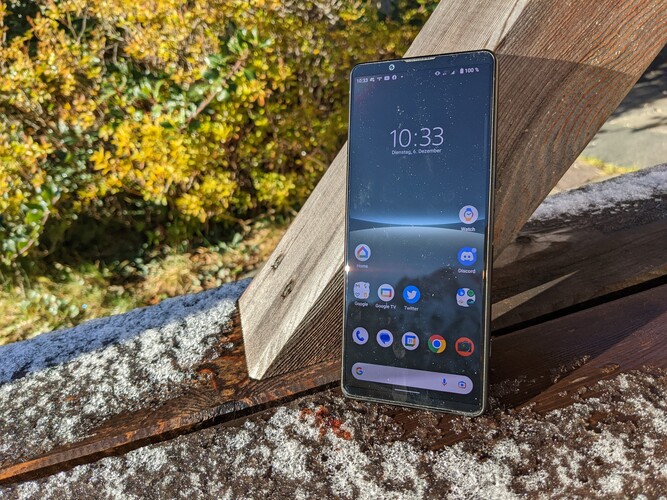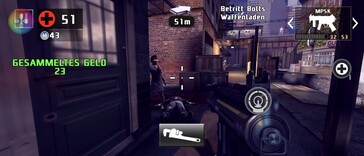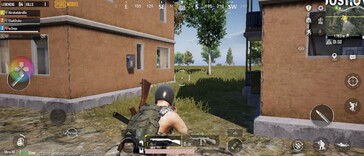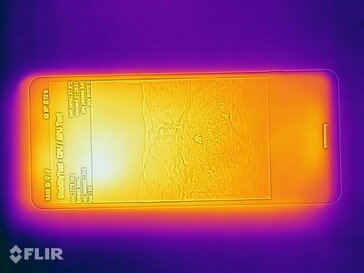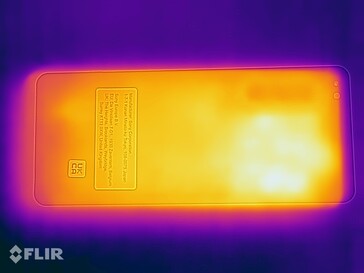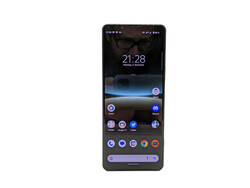索尼Xperia 5 IV评测--有个性的智能手机
即使在我们回顾索尼Xperia 5 III时,这款小巧的设备就以其强大的硬件给我们留下了非常深刻的印象。索尼现在发布了Xperia 5 IV,这款手机旨在解决其前辈的不足之处。该设备拥有21:9的长宽比、音频插孔和微型SD卡的扩展槽等功能。
索尼只提供一种配置的手机(128GB存储空间和8GB内存),但它有三种颜色可供选择:白色、深绿色和黑色。
潜在的竞争对手比较
Rating | Date | Model | Weight | Drive | Size | Resolution | Price |
|---|---|---|---|---|---|---|---|
| 89.2 % v7 (old) | 12 / 2022 | Sony Xperia 5 IV SD 8 Gen 1, Adreno 730 | 171 g | 128 GB UFS 3.1 Flash | 6.10" | 2520x1080 | |
| 89.2 % v7 (old) | 10 / 2022 | Apple iPhone 14 A15, A15 GPU 5-Core | 172 g | 128 GB NVMe | 6.10" | 2532x1170 | |
| 89.1 % v7 (old) | 11 / 2022 | Google Pixel 7 Pro Tensor G2, Mali-G710 MP7 | 212 g | 128 GB UFS 3.1 Flash | 6.70" | 3120x1440 | |
| 88.9 % v7 (old) | 05 / 2022 | Samsung Galaxy S22+ Exynos 2200, Xclipse 920 | 196 g | 128 GB UFS 3.1 Flash | 6.60" | 2340x1080 | |
| 88.1 % v7 (old) | 06 / 2022 | OnePlus 10 Pro SD 8 Gen 1, Adreno 730 | 200.5 g | 256 GB UFS 3.1 Flash | 6.70" | 3216x1440 | |
| 89.3 % v7 (old) | 10 / 2022 | Motorola Edge 30 Ultra SD 8+ Gen 1, Adreno 730 | 198.5 g | 256 GB UFS 3.1 Flash | 6.67" | 2400x1080 |
案例--索尼采用了21:9的长宽比
» Notebookcheck多媒体笔记本电脑Top 10排名
» Notebookcheck游戏笔记本电脑Top 10排名
» Notebookcheck低价办公/商务笔记本电脑Top 10排名
» Notebookcheck高端办公/商务笔记本电脑Top 10排名
» Notebookcheck工作站笔记本电脑Top 10排名
» Notebookcheck亚笔记本电脑Top 10排名
» Notebookcheck超级本产品Top 10排名
» Notebookcheck变形本产品Top 10排名
» Notebookcheck平板电脑Top 10排名
» Notebookcheck智能手机Top 10排名
» Notebookcheck评测过最出色的笔记本电脑屏幕
» Notebookcheck售价500欧元以下笔记本电脑Top 10排名
» Notebookcheck售价300欧元以下笔记本电脑Top 10排名
Xperia 5 IV是由玻璃和金属制成的。显示屏和背面都有一层康宁大猩猩玻璃Victus保护。后面和金属框架有一个哑光的表面。尽管是黑色,我们的评测单元几乎没有吸引任何指纹。
这款手机有很好的配合和完成度。机身上的缝隙小而均匀;按钮牢牢地坐在位置上,按起来感觉很好。唯一的问题是,音量摇杆在机身中略有晃动。Xperia 5 IV有一个独特的SIM卡托盘,不需要任何工具就能取出。
这款智能手机具有IP65/68等级,意味着它可以防潮和防尘。该设备保留了与前代产品相同的设计。索尼已经决定取消前置摄像头的冲孔或凹槽,而是选择在屏幕周围采用老式的、更厚的边框。这为前置立体声扬声器提供了空间。
规格 - 音频插孔和微型SD卡插槽
微型SD卡读卡器
索尼Xperia 5 IV支持存储量高达1TB的microSD卡。在我们的测试中,该手机在使用我们的参考卡Angelbird AV Pro V60时表现出缓慢的传输速度。在跨平台磁盘测试中,它也提供了相当糟糕的结果,比它的前任表现更差。 前辈而且大大差于 华硕Zenfone 8 Flip.
| SD Card Reader - average JPG Copy Test (av. of 3 runs) | |
| Asus Zenfone 8 Flip (Toshiba Exceria Pro M501) | |
| Sony Xperia 5 III | |
| Sony Xperia 5 IV (Angelbird AV Pro V60) | |
Cross Platform Disk Test (CPDT)
软件--几乎是香草味的Android
在我们审查期间,Xperia 5 IV运行在Android 12,并有一个2022年10月1日的安全补丁。该操作系统在大多数情况下是库存Android ,有一些由索尼实现的额外功能。
"侧面感应 "是一项功能,允许你双击屏幕的侧面,在弹出的窗口中显示手机认为你可能想使用的应用程序列表。此外,可以在多窗口模式下同时打开两个应用程序,并调整每个窗口的大小。这些功能可以通过一个你可以调出的栏来访问。
这款手机配备了一个 "游戏增强器 "应用程序,当你打开一个游戏时自动启动。在你玩游戏时,一个弹出式图标将保持可见。点击该图标将让你快速访问显示和音量设置、流媒体工具和性能模式。
Xperia 5 IV支持Widevine Level 1,从而使你可以在手机上流传高清内容。Camera2 API处于完全支持水平。除了谷歌和索尼制作的应用程序,该手机几乎没有预装任何第三方应用程序,只有Facebook和LinkedIn。
连接性和GNSS - 支持Wi-Fi 6E
索尼Xperia 5 IV支持Wi-Fi 6E,在我们的参考路由器--华硕ROG Rapture GT-AXE11000的支持下,实现了快速而稳定的传输速度。它在我们的比较中领先于其他智能手机,除了 摩托罗拉Edge 30 Ultra.
这款手机还兼容广泛的移动频率,总共支持12个5G和25个LTE频段。在测试过程中,我们没有发现任何关于接收的问题。
电话功能和语音质量 - 清晰的语音传输
Xperia 5 IV的语音质量很好。用户和另一端的人的声音都很清晰,没有任何干扰。这款手机能够很好地抑制背景噪音,而且耳边的扬声器也足够响亮。即使在使用内置免提模式时,该设备也能提供很好的音质。
索尼安装了谷歌的官方电话呼叫应用程序,它的界面清晰易懂。在音频输出方面,该公司提供了额外的功能。你可以使用 "360现实音频 "来个性化你的听觉体验。Xperia还配备了风噪降低功能。
相机 - Xperia提供四个1200万像素传感器
索尼并不打算在百万像素数量方面追求任何记录。这款手机上的所有四个摄像头的最大分辨率为1200万像素。后面的镜头的焦距为16、24和60毫米。Xperia 5 IV仍然保留了一个超广角和一个变焦摄像头,但其前身的可变变焦功能这次被放弃。所有镜头都是与蔡司合作为手机进行微调的,并采用蔡司T*涂层。
1200万像素的前置摄像头比之前的Xperia 5上的800万像素前置摄像头有所升级。它产生的图像大多是漂亮、锐利、色彩自然的。有时可能会出现云雾缭绕的情况,这取决于光线的落差。
前置摄像头可以录制高质量的视频,分辨率最高可达4K。即使在最高分辨率下,图像稳定功能也很出色。此外,该手机提供连续自动对焦,能够跟踪人类和动物。
同样,背面的摄像头能够拍摄4K视频,声音和图像质量令人印象深刻。没有卡顿,图像稳定效果也非常好。录制视频时,你甚至可以在摄像头之间切换。这就是说,过渡是相当生硬的。
虽然在Xperia 5 IV上拍摄的图像有很好的色彩还原,但它们可以更清晰一些(尤其是那些用超宽摄像头拍摄的图像)。
Image comparison
Choose a scene and navigate within the first image. One click changes the position on touchscreens. One click on the zoomed-in image opens the original in a new window. The first image shows the scaled photograph of the test device.
Main camera: rabbitMain camera: lakeUltrawide camera5X zoomLow-light photo使用ColorChecker分析相机,我们发现用Xperia 5 IV拍摄的图像通常具有相当的色彩准确性。颜色看起来很自然,但灰色的阴影与参考颜色的偏差较大。在弱光下(一勒克斯),对于这个价位的手机来说,色差是非常大的。
测试的图像看起来很清晰,只是在边缘处变得比较柔和。在一勒克斯条件下拍摄的照片仍然可以看出细节,但图像的噪音很大。
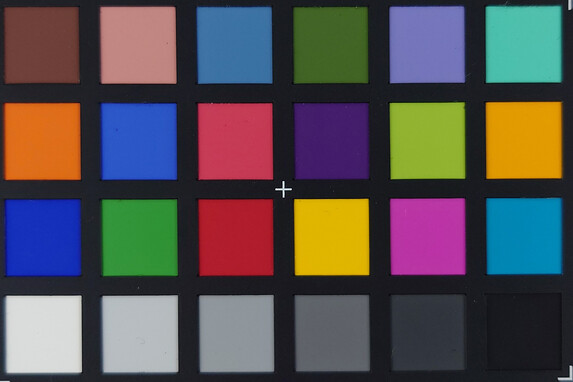
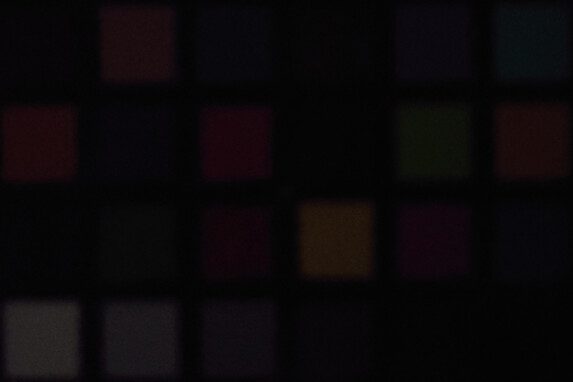
配件和保修--连USB线都没有了
盒子里的东西非常不值一提。除了手机本身,你只能找到一份快速入门指南。没有充电器,甚至没有USB线。同样也不包括SIM卡弹出工具,因为SIM卡托盘不需要工具就可以取出。
索尼在德国为Xperia 5 IV提供两年的保修期。保修的条款和条件可能因国家而异。
输入设备和操作 - 可靠的指纹传感器
显示器 - 索尼采用了明亮的OLED面板
索尼Xperia 5 IV采用6.1英寸OLED面板,长宽比为21:9。由于面板的性质,它在测试期间设法给我们留下了完美的黑色水平和奇妙的对比度。屏幕也变得令人愉快的明亮。在启用环境光传感器的情况下,我们测量的最大亮度为922cd/m²;在关闭传感器的情况下,面板的亮度达到了603cd/m²。这意味着索尼手机的屏幕比iPhone 14的屏幕略微明亮。 iPhone 14的显示屏,但像素7 Pro, Galaxy S22+和 Edge 30 Ultra甚至可以得到比这更高的亮度。
该面板具有均匀的亮度分布,支持高达120Hz的刷新率。用户也可以将显示器设置为始终以120Hz运行,或者让软件自动调整刷新率。然而,你不能手动选择其他固定刷新率。根据应用程序DRM Info,该面板只能显示60Hz或120Hz的内容--其他刷新率不可用。
该显示器支持10点多点触摸。在测试中,我们检测到频率在120Hz和475Hz之间的PWM闪烁。这种闪烁发生在面板的整个亮度范围内,而且没有直流调光模式。另一方面,我们没有检测到任何时间上的抖动。
| |||||||||||||||||||||||||
Brightness Distribution: 97 %
Center on Battery: 896 cd/m²
Contrast: ∞:1 (Black: 0 cd/m²)
ΔE ColorChecker Calman: 2 | ∀{0.5-29.43 Ø4.78}
ΔE Greyscale Calman: 1.3 | ∀{0.09-98 Ø5}
100% sRGB (Calman 2D)
Gamma: 2.25
CCT: 6618 K
| Sony Xperia 5 IV OLED, 2520x1080, 6.1" | Apple iPhone 14 OLED, 2532x1170, 6.1" | Google Pixel 7 Pro OLED, 3120x1440, 6.7" | Samsung Galaxy S22+ AMOLED, 2340x1080, 6.6" | OnePlus 10 Pro AMOLED, 3216x1440, 6.7" | Motorola Edge 30 Ultra pOLED, 2400x1080, 6.7" | |
|---|---|---|---|---|---|---|
| Screen | -2% | 28% | -3% | 17% | 12% | |
| Brightness middle (cd/m²) | 896 | 835 -7% | 1022 14% | 1090 22% | 793 -11% | 1020 14% |
| Brightness (cd/m²) | 902 | 841 -7% | 1025 14% | 1097 22% | 776 -14% | 1020 13% |
| Brightness Distribution (%) | 97 | 97 0% | 99 2% | 98 1% | 95 -2% | 96 -1% |
| Black Level * (cd/m²) | ||||||
| Colorchecker dE 2000 * | 2 | 1.05 47% | 0.9 55% | 2.5 -25% | 0.79 60% | 1 50% |
| Colorchecker dE 2000 max. * | 6.4 | 2.81 56% | 2.1 67% | 3.8 41% | 1.93 70% | 2.8 56% |
| Greyscale dE 2000 * | 1.3 | 2.6 -100% | 1.1 15% | 2.3 -77% | 1.3 -0% | 2.1 -62% |
| Gamma | 2.25 98% | 2.034 108% | 2.22 99% | 2.04 108% | 2.223 99% | 2.29 96% |
| CCT | 6618 98% | 6616 98% | 6650 98% | 6492 100% | 6624 98% | 6502 100% |
* ... smaller is better
Screen Flickering / PWM (Pulse-Width Modulation)
| Screen flickering / PWM detected | 475 Hz | ||
The display backlight flickers at 475 Hz (worst case, e.g., utilizing PWM) . The frequency of 475 Hz is relatively high, so most users sensitive to PWM should not notice any flickering. However, there are reports that some users are still sensitive to PWM at 500 Hz and above, so be aware. In comparison: 53 % of all tested devices do not use PWM to dim the display. If PWM was detected, an average of 8118 (minimum: 5 - maximum: 343500) Hz was measured. | |||
Display Response Times
| ↔ Response Time Black to White | ||
|---|---|---|
| 1.06 ms ... rise ↗ and fall ↘ combined | ↗ 0.5445 ms rise | |
| ↘ 0.511 ms fall | ||
| The screen shows very fast response rates in our tests and should be very well suited for fast-paced gaming. In comparison, all tested devices range from 0.1 (minimum) to 240 (maximum) ms. » 4 % of all devices are better. This means that the measured response time is better than the average of all tested devices (20.2 ms). | ||
| ↔ Response Time 50% Grey to 80% Grey | ||
| 1.4 ms ... rise ↗ and fall ↘ combined | ↗ 1.024 ms rise | |
| ↘ 1.771 ms fall | ||
| The screen shows very fast response rates in our tests and should be very well suited for fast-paced gaming. In comparison, all tested devices range from 0.165 (minimum) to 636 (maximum) ms. » 5 % of all devices are better. This means that the measured response time is better than the average of all tested devices (31.6 ms). | ||
性能 - Xperia 5始终运行流畅
索尼Xperia 5 IV配备了 骁龙8代1(集成了 阿德雷诺730GPU)和8GB的RAM。这一组合在日常使用中提供了令人印象深刻的流畅性能。应用程序立即启动,在打开的应用程序之间切换是小菜一碟。快速的120Hz显示屏加强了这种速度感。
尽管有相同的SoC,但Xperia 5 IV的性能基本上不如 一加10 Pro,而 摩托罗拉Edge 30 Ultra采用较新的 骁龙8+第一代.索尼Xperia稍稍领先于 像素7 Pro和 三星Galaxy S22+.这使Xperia 5 IV在我们的比较中处于中间位置。
| UL Procyon AI Inference for Android - Overall Score NNAPI | |
| Sony Xperia 5 IV | |
| Average Qualcomm Snapdragon 8 Gen 1 (61568 - 81722, n=8) | |
| Google Pixel 7 Pro | |
| Average of class Smartphone (3769 - 81594, n=137, last 2 years) | |
| Motorola Edge 30 Ultra | |
| AImark - Score v2.x | |
| Average Qualcomm Snapdragon 8 Gen 1 (1046 - 96317, n=14) | |
| Samsung Galaxy S22+ | |
| OnePlus 10 Pro | |
| Motorola Edge 30 Ultra | |
| Google Pixel 7 Pro | |
| Sony Xperia 5 IV | |
GPU基准测试结果与CPU的测量结果相似。Xperia 5舒适地坐在中间位置,但不得不把头等位置让给其他设备。尽管如此,这款手机的性能不仅完全可以满足日常任务,还可以满足对图形要求高的应用程序。
GFXBench (DX / GLBenchmark) 2.7: T-Rex Onscreen | 1920x1080 T-Rex Offscreen
GFXBench 3.0: on screen Manhattan Onscreen OGL | 1920x1080 1080p Manhattan Offscreen
GFXBench 3.1: on screen Manhattan ES 3.1 Onscreen | 1920x1080 Manhattan ES 3.1 Offscreen
GFXBench: on screen Car Chase Onscreen | 1920x1080 Car Chase Offscreen | on screen Aztec Ruins High Tier Onscreen | 2560x1440 Aztec Ruins High Tier Offscreen | on screen Aztec Ruins Normal Tier Onscreen | 1920x1080 Aztec Ruins Normal Tier Offscreen
| 3DMark / Wild Life Extreme Unlimited | |
| Apple iPhone 14 | |
| Motorola Edge 30 Ultra | |
| OnePlus 10 Pro | |
| Sony Xperia 5 IV | |
| Samsung Galaxy S22+ | |
| Google Pixel 7 Pro | |
| 3DMark / Wild Life Extreme | |
| Apple iPhone 14 | |
| Motorola Edge 30 Ultra | |
| OnePlus 10 Pro | |
| Sony Xperia 5 IV | |
| Samsung Galaxy S22+ | |
| Google Pixel 7 Pro | |
| 3DMark / Wild Life Unlimited Score | |
| Apple iPhone 14 | |
| Motorola Edge 30 Ultra | |
| OnePlus 10 Pro | |
| Sony Xperia 5 IV | |
| Samsung Galaxy S22+ | |
| Google Pixel 7 Pro | |
| 3DMark / Wild Life Score | |
| OnePlus 10 Pro | |
| Sony Xperia 5 IV | |
| Samsung Galaxy S22+ | |
| Google Pixel 7 Pro | |
| Apple iPhone 14 | |
| 3DMark / Sling Shot Extreme (Vulkan) Unlimited Physics | |
| Samsung Galaxy S22+ | |
| Apple iPhone 14 | |
| 3DMark / Sling Shot Extreme (Vulkan) Unlimited Graphics | |
| Samsung Galaxy S22+ | |
| Apple iPhone 14 | |
| 3DMark / Sling Shot Extreme (Vulkan) Unlimited | |
| Samsung Galaxy S22+ | |
| Apple iPhone 14 | |
| 3DMark / Sling Shot Extreme (ES 3.1) Unlimited Physics | |
| Motorola Edge 30 Ultra | |
| Google Pixel 7 Pro | |
| Sony Xperia 5 IV | |
| OnePlus 10 Pro | |
| Samsung Galaxy S22+ | |
| Apple iPhone 14 | |
| 3DMark / Sling Shot Extreme (ES 3.1) Unlimited Graphics | |
| Motorola Edge 30 Ultra | |
| OnePlus 10 Pro | |
| Sony Xperia 5 IV | |
| Samsung Galaxy S22+ | |
| Google Pixel 7 Pro | |
| Apple iPhone 14 | |
| 3DMark / Sling Shot Extreme (ES 3.1) Unlimited | |
| Motorola Edge 30 Ultra | |
| OnePlus 10 Pro | |
| Sony Xperia 5 IV | |
| Samsung Galaxy S22+ | |
| Google Pixel 7 Pro | |
| Apple iPhone 14 | |
| GFXBench (DX / GLBenchmark) 2.7 / T-Rex Onscreen | |
| Motorola Edge 30 Ultra | |
| Google Pixel 7 Pro | |
| Samsung Galaxy S22+ | |
| Sony Xperia 5 IV | |
| OnePlus 10 Pro | |
| Apple iPhone 14 | |
| GFXBench (DX / GLBenchmark) 2.7 / T-Rex Offscreen | |
| Motorola Edge 30 Ultra | |
| Apple iPhone 14 | |
| OnePlus 10 Pro | |
| Samsung Galaxy S22+ | |
| Sony Xperia 5 IV | |
| Google Pixel 7 Pro | |
| GFXBench 3.0 / Manhattan Onscreen OGL | |
| Motorola Edge 30 Ultra | |
| Samsung Galaxy S22+ | |
| Google Pixel 7 Pro | |
| OnePlus 10 Pro | |
| Sony Xperia 5 IV | |
| Apple iPhone 14 | |
| GFXBench 3.0 / 1080p Manhattan Offscreen | |
| Apple iPhone 14 | |
| Motorola Edge 30 Ultra | |
| Samsung Galaxy S22+ | |
| OnePlus 10 Pro | |
| Sony Xperia 5 IV | |
| Google Pixel 7 Pro | |
| GFXBench 3.1 / Manhattan ES 3.1 Onscreen | |
| Motorola Edge 30 Ultra | |
| Samsung Galaxy S22+ | |
| OnePlus 10 Pro | |
| Sony Xperia 5 IV | |
| Apple iPhone 14 | |
| Google Pixel 7 Pro | |
| GFXBench 3.1 / Manhattan ES 3.1 Offscreen | |
| Motorola Edge 30 Ultra | |
| Apple iPhone 14 | |
| OnePlus 10 Pro | |
| Samsung Galaxy S22+ | |
| Sony Xperia 5 IV | |
| Google Pixel 7 Pro | |
| GFXBench / Car Chase Onscreen | |
| Motorola Edge 30 Ultra | |
| Samsung Galaxy S22+ | |
| OnePlus 10 Pro | |
| Apple iPhone 14 | |
| Sony Xperia 5 IV | |
| Google Pixel 7 Pro | |
| GFXBench / Car Chase Offscreen | |
| Apple iPhone 14 | |
| Motorola Edge 30 Ultra | |
| Samsung Galaxy S22+ | |
| OnePlus 10 Pro | |
| Google Pixel 7 Pro | |
| Sony Xperia 5 IV | |
| GFXBench / Aztec Ruins High Tier Onscreen | |
| Motorola Edge 30 Ultra | |
| Apple iPhone 14 | |
| OnePlus 10 Pro | |
| Samsung Galaxy S22+ | |
| Sony Xperia 5 IV | |
| Google Pixel 7 Pro | |
| GFXBench / Aztec Ruins High Tier Offscreen | |
| Motorola Edge 30 Ultra | |
| OnePlus 10 Pro | |
| Apple iPhone 14 | |
| Samsung Galaxy S22+ | |
| Google Pixel 7 Pro | |
| Sony Xperia 5 IV | |
| GFXBench / Aztec Ruins Normal Tier Onscreen | |
| Motorola Edge 30 Ultra | |
| Samsung Galaxy S22+ | |
| OnePlus 10 Pro | |
| Apple iPhone 14 | |
| Sony Xperia 5 IV | |
| Google Pixel 7 Pro | |
| GFXBench / Aztec Ruins Normal Tier Offscreen | |
| Motorola Edge 30 Ultra | |
| Apple iPhone 14 | |
| OnePlus 10 Pro | |
| Google Pixel 7 Pro | |
| Sony Xperia 5 IV | |
| Samsung Galaxy S22+ | |
索尼Xperia提供出色的浏览器性能。这款手机在基准测试和实际使用中都提供了极好的流畅体验。网站加载迅速,没有停顿。打开许多标签也不会影响性能。
| Jetstream 2 - 2.0 Total Score | |
| Apple iPhone 14 (Safari 16) | |
| Average of class Smartphone (23.8 - 387, n=153, last 2 years) | |
| Sony Xperia 5 IV (chrome 107) | |
| Motorola Edge 30 Ultra (Chrome 105) | |
| Average Qualcomm Snapdragon 8 Gen 1 (72.8 - 134.6, n=16) | |
| Samsung Galaxy S22+ (Chrome 100.0.4896.127) | |
| OnePlus 10 Pro (Chrome100) | |
| Google Pixel 7 Pro (Chrome 106) | |
| Speedometer 2.0 - Result 2.0 | |
| Apple iPhone 14 (Safari 16) | |
| Average of class Smartphone (15.2 - 643, n=128, last 2 years) | |
| OnePlus 10 Pro (Chrome100) | |
| Samsung Galaxy S22+ (Chrome 100.0.4896.127) | |
| Google Pixel 7 Pro (Chrome 106) | |
| Average Qualcomm Snapdragon 8 Gen 1 (64.4 - 129.3, n=16) | |
| Motorola Edge 30 Ultra (Chrome 105) | |
| Sony Xperia 5 IV (Chrome 107) | |
| WebXPRT 4 - Overall | |
| Apple iPhone 14 (Safari 16) | |
| Average of class Smartphone (27 - 306, n=147, last 2 years) | |
| Sony Xperia 5 IV (Chrome 107) | |
| Motorola Edge 30 Ultra (Chrome 105) | |
| Average Qualcomm Snapdragon 8 Gen 1 (68 - 119, n=4) | |
| Google Pixel 7 Pro (Chrome 106) | |
| WebXPRT 3 - Overall | |
| Apple iPhone 14 (Safari 16) | |
| OnePlus 10 Pro (Chrome100) | |
| Average of class Smartphone (38 - 380, n=35, last 2 years) | |
| Sony Xperia 5 IV (Chrome 107) | |
| Samsung Galaxy S22+ (Chrome 100.0.4896.127) | |
| Motorola Edge 30 Ultra (Chrome 105) | |
| Average Qualcomm Snapdragon 8 Gen 1 (79 - 193, n=15) | |
| Google Pixel 7 Pro (Chrome 106) | |
| Octane V2 - Total Score | |
| Apple iPhone 14 (Safari 16) | |
| OnePlus 10 Pro (Chrome100) | |
| Average of class Smartphone (2228 - 121337, n=200, last 2 years) | |
| Sony Xperia 5 IV (Chrome 107) | |
| Samsung Galaxy S22+ (Chrome 100.0.4896.127) | |
| Google Pixel 7 Pro (Chrome 106) | |
| Average Qualcomm Snapdragon 8 Gen 1 (27730 - 50626, n=17) | |
| Motorola Edge 30 Ultra (Chrome 105) | |
| Mozilla Kraken 1.1 - Total | |
| Samsung Galaxy S22+ (Chrome 100.0.4896.127) | |
| Average of class Smartphone (257 - 28190, n=155, last 2 years) | |
| Motorola Edge 30 Ultra (Chrome 105) | |
| Google Pixel 7 Pro (Chrome 106) | |
| Average Qualcomm Snapdragon 8 Gen 1 (814 - 1440, n=16) | |
| Sony Xperia 5 IV | |
| OnePlus 10 Pro (Chrome100) | |
| Apple iPhone 14 (Safari 16) | |
* ... smaller is better
当涉及到存储速度时,Xperia 5 IV不能再保持它在中游的位置。虽然这些数字本身并不坏,但在我们的比较中,所有其他设备都更快。这款手机 摩托罗拉Edge 30 Ultra处于一个自己的联盟中。
也就是说,Xperia为用户提供了用microSD卡增加存储容量的选项,从而获得了加分。
| Sony Xperia 5 IV | Google Pixel 7 Pro | Samsung Galaxy S22+ | OnePlus 10 Pro | Motorola Edge 30 Ultra | Average 128 GB UFS 3.1 Flash | Average of class Smartphone | |
|---|---|---|---|---|---|---|---|
| AndroBench 3-5 | -4% | 19% | 19% | 50% | -1% | 53% | |
| Sequential Read 256KB (MB/s) | 1474 | 1346.78 -9% | 1629.99 11% | 1602.12 9% | 1717.77 17% | 1586 ? 8% | 2223 ? 51% |
| Sequential Write 256KB (MB/s) | 997 | 874.73 -12% | 1001.67 0% | 1253.34 26% | 1363.58 37% | 763 ? -23% | 1838 ? 84% |
| Random Read 4KB (MB/s) | 207 | 219.01 6% | 306.7 48% | 284.34 37% | 349.08 69% | 243 ? 17% | 295 ? 43% |
| Random Write 4KB (MB/s) | 254 | 253.18 0% | 297.67 17% | 264.45 4% | 446.25 76% | 241 ? -5% | 335 ? 32% |
游戏 - 能够运行现代游戏
由于内部强大的硬件,Xperia 5 IV拥有出色的游戏性能。即使是现代游戏,如PUBG Mobile,也能在最大图形设置下完美运行。正如使用Gamebench进行的测量所显示的,性能保持稳定,帧率没有任何下降。
然而,在 一加10 Pro(配备了相同的SoC和GPU)在相同的设置下,在PUBG Mobile中比我们的评测单元多出10帧。Xperia在游戏过程中也会明显变热。但Xperia的一个优势是它有位置良好的扬声器,可以直接向玩家投射声音。
排放物 - Xperia 5会明显发热
温度
索尼Xperia 5 IV在高负荷运行时变热。该设备上最热的部分是摄像头周围的上部区域。我们测得的最高温度为39.6°C(103.3°F),在满负荷的情况下,整个手机表面的平均温度为37.7°C(99.9°F),这意味着该设备的运行温度高于这个级别的平均手机。当设备运行游戏或其他CPU密集型任务时,框架会明显变热。
在3DMark压力测试中,索尼Xperia 5 IV在对比组中处于中间位置。在稳定测试过程中,其性能大约下降了40%。然而,除了 iPhone 14和 像素7 Pro,其他竞争对手的表现都不太理想。索尼Xperia稍稍落后于一加10 Pro。 一加10 Pro尽管拥有相同的SoC。
(+) The maximum temperature on the upper side is 39.6 °C / 103 F, compared to the average of 35.2 °C / 95 F, ranging from 21.9 to 247 °C for the class Smartphone.
(+) The bottom heats up to a maximum of 37.4 °C / 99 F, compared to the average of 34 °C / 93 F
(+) In idle usage, the average temperature for the upper side is 29.3 °C / 85 F, compared to the device average of 32.9 °C / 91 F.
3DMark Wild Life Stress Test
| 3DMark | |
| Wild Life Stress Test Stability | |
| Apple iPhone 14 | |
| OnePlus 10 Pro | |
| Google Pixel 7 Pro | |
| Sony Xperia 5 IV | |
| Motorola Edge 30 Ultra | |
| Samsung Galaxy S22+ | |
| Wild Life Extreme Stress Test | |
| Google Pixel 7 Pro | |
| Apple iPhone 14 | |
| OnePlus 10 Pro | |
| Sony Xperia 5 IV | |
| Motorola Edge 30 Ultra | |
| Samsung Galaxy S22+ | |
扬声器 - 令人敬畏的立体声扬声器和声场
Xperia 5 IV的立体声扬声器在各方面都非常出色。我们的测量结果显示,中音和高音都有明显的线性和平衡。扬声器也可以变得非常响亮。唯一的问题是,与大多数智能手机的扬声器一样,它们总体上缺乏低音和低频。
扬声器的位置很特别,因为它们是正面的。更重要的是,它们不仅通过了杜比全景声认证,而且还与360现实音频兼容。该功能允许两个扬声器产生惊人的三维声音,前提是音频内容已经为其正确编码。你可以使用手机附带的Tidal三个月的免费试用套餐来测试360现实音频。这款手机还有一个功能,可以让你通过同步振动来增强你的音频体验。
对于那些喜欢使用有线耳机的人,索尼提供了一个3.5毫米音频插孔,信噪比为85dBFS。Xperia 5 IV支持广泛的蓝牙编解码,包括SBC、AAC、aptX、aptX HD、LDAC、aptx Adaptive和aptX TWS+。在我们的测试中,将各种无线耳机连接到设备上时,我们没有遇到任何问题。
Sony Xperia 5 IV audio analysis
(+) | speakers can play relatively loud (87.1 dB)
Bass 100 - 315 Hz
(-) | nearly no bass - on average 24.9% lower than median
(±) | linearity of bass is average (10.9% delta to prev. frequency)
Mids 400 - 2000 Hz
(+) | balanced mids - only 4.2% away from median
(+) | mids are linear (4.6% delta to prev. frequency)
Highs 2 - 16 kHz
(+) | balanced highs - only 4.4% away from median
(+) | highs are linear (1.5% delta to prev. frequency)
Overall 100 - 16.000 Hz
(±) | linearity of overall sound is average (17.6% difference to median)
Compared to same class
» 13% of all tested devices in this class were better, 8% similar, 79% worse
» The best had a delta of 11%, average was 35%, worst was 134%
Compared to all devices tested
» 33% of all tested devices were better, 8% similar, 58% worse
» The best had a delta of 4%, average was 24%, worst was 134%
OnePlus 10 Pro audio analysis
(+) | speakers can play relatively loud (88.1 dB)
Bass 100 - 315 Hz
(-) | nearly no bass - on average 31.3% lower than median
(±) | linearity of bass is average (10.8% delta to prev. frequency)
Mids 400 - 2000 Hz
(+) | balanced mids - only 4.1% away from median
(+) | mids are linear (3.7% delta to prev. frequency)
Highs 2 - 16 kHz
(+) | balanced highs - only 3% away from median
(+) | highs are linear (4.6% delta to prev. frequency)
Overall 100 - 16.000 Hz
(±) | linearity of overall sound is average (18.8% difference to median)
Compared to same class
» 22% of all tested devices in this class were better, 10% similar, 68% worse
» The best had a delta of 11%, average was 35%, worst was 134%
Compared to all devices tested
» 42% of all tested devices were better, 8% similar, 50% worse
» The best had a delta of 4%, average was 24%, worst was 134%
电池寿命--Xperia 5 IV让我们大惑不解
消耗功率
| Off / Standby | |
| Idle | |
| Load |
|
Key:
min: | |
| Sony Xperia 5 IV 5000 mAh | Apple iPhone 14 3279 mAh | Google Pixel 7 Pro 5000 mAh | Samsung Galaxy S22+ 4500 mAh | OnePlus 10 Pro 5000 mAh | Motorola Edge 30 Ultra 4610 mAh | Average Qualcomm Snapdragon 8 Gen 1 | Average of class Smartphone | |
|---|---|---|---|---|---|---|---|---|
| Power Consumption | 1% | -12% | -23% | -30% | -14% | -61% | -42% | |
| Idle Minimum * (Watt) | 0.7 | 0.6 14% | 0.78 -11% | 0.71 -1% | 0.7 -0% | 0.74 -6% | 1.255 ? -79% | 0.848 ? -21% |
| Idle Average * (Watt) | 1.04 | 0.8 23% | 1.61 -55% | 1.1 -6% | 1.1 -6% | 1.84 -77% | 2.02 ? -94% | 1.435 ? -38% |
| Idle Maximum * (Watt) | 1.15 | 1 13% | 1.63 -42% | 1.19 -3% | 1.7 -48% | 1.86 -62% | 2.21 ? -92% | 1.621 ? -41% |
| Load Average * (Watt) | 4.25 | 5.4 -27% | 3.29 23% | 7.74 -82% | 6.4 -51% | 2.75 35% | 5.49 ? -29% | 6.99 ? -64% |
| Load Maximum * (Watt) | 7.84 | 9.2 -17% | 6.01 23% | 9.64 -23% | 11.3 -44% | 4.54 42% | 8.75 ? -12% | 11.3 ? -44% |
* ... smaller is better
Leistungsaufnahme: Geekbench (150 cd/m²)
Leistungsaufnahme: GFXBench (150 cd/m²)
电池寿命
在为这次审查进行电池分析时,我们发现了一些令人费解的事情。可以说,Xperia 5 IV在负载下可以很好地管理资源。它持续的时间大大超过了 一加10 Pro在压力测试中的时间要长得多。然而,在所有其他测试中,OnePlus的电池寿命远远优于Xperia,尽管两款设备的电池容量相同。
Xperia的持续时间比竞争对手短得多,特别是在 "读者测试 "和Wi-Fi测试(模拟现实生活中的使用场景)。抛开我们的测试,这款手机在日常使用中提供了很好的电池寿命。Xperia 5 IV一次充电就能轻松度过漫长的一天。两天的轻度使用也不是不可能的事。
索尼并不是要为拥有最快的充电时间而赢得任何奖项。该公司没有在手机中加入充电器,而是在其网站上推荐自己的30W快速充电器。我们在测试中没有使用索尼的原装充电器,而是试用了其他各种充电设备。在最好的情况下,Xperia 5 IV使用谷歌的18W充电器,在1小时35分钟内成功从10%充到100%。
与它的前辈不同,Xperia 5 IV也可以使用Qi标准进行无线充电。
| Sony Xperia 5 IV 5000 mAh | Apple iPhone 14 3279 mAh | Google Pixel 7 Pro 5000 mAh | Samsung Galaxy S22+ 4500 mAh | OnePlus 10 Pro 5000 mAh | Motorola Edge 30 Ultra 4610 mAh | |
|---|---|---|---|---|---|---|
| Battery runtime | 64% | 6% | 52% | 21% | 47% | |
| Reader / Idle (h) | 15.9 | 44.8 182% | 20.2 27% | 42.9 170% | 27 70% | 36.8 131% |
| H.264 (h) | 17.3 | 21.1 22% | 20.2 17% | 17 -2% | 18.7 8% | 19.8 14% |
| WiFi v1.3 (h) | 10.3 | 16.8 63% | 11.3 10% | 13.1 27% | 12.8 24% | 14.5 41% |
| Load (h) | 5.4 | 4.8 -11% | 3.8 -30% | 6.1 13% | 4.3 -20% | 5.4 0% |
Pros
Cons
结论 - Xperia 5 IV是一款独特而出色的设备
索尼在Xperia 5 IV上走了自己的路,首先是21:9长宽比的超薄机身,既没有缺口也没有打孔。尽管屏幕周围的宽条设计看起来不太现代,但机箱提供的空间可以容纳一对出色的扬声器。那些拥有高品质耳机的人,会很高兴地发现一个3.5毫米的音频插孔。如果有必要,你还可以将你的音乐或其他媒体收藏放在microSD卡上,并将其插入手机中。
Xperia 5 IV的摄像头不会以高像素让你惊叹,但它们能提供良好的效果,至少在有足够光线的情况下。然而,相机产生的图像缺乏一点清晰度,而且索尼没有在手机上安装可变变焦,这也是一个遗憾。但至少Xperia 5 IV背面有三个完全成熟的摄像头。
性能方面 骁龙8代1毫无疑问是非常好的。Xperia 5 IV可以轻松处理当前的游戏和日常任务,在性能方面为未来几年做好了准备。然而,手机在高负荷时确实会发热。令人遗憾的是,索尼只承诺在相当短的时间内提供更新,尤其是考虑到该手机的性能。
总之,索尼Xperia 5 IV是一款独特的手机,在某些方面走自己的路。
这款手机肯定会赢得一些粉丝的青睐,但它并不便宜。如果你想要一个microSD插槽和一个音频插孔,其他手机将很难与Xperia 5 IV竞争。如果你更关注处理能力,那么 一加10 Pro可能值得一看,因为它用相同的SoC提供了稍好的性能。如果想获得更多性能、屏幕空间和百万像素,那么 摩托罗拉Edge 30 Ultra可能是一个不错的选择。
Sony Xperia 5 IV
- 12/13/2022 v7 (old)
Benedikt Winkel




